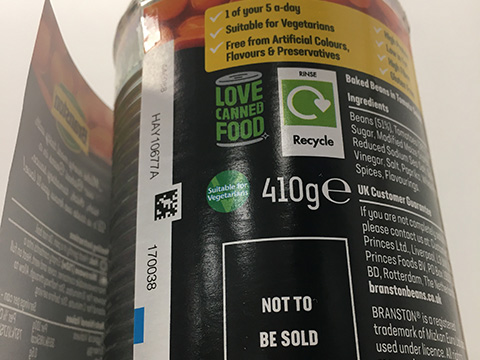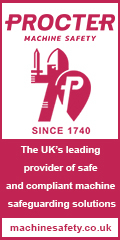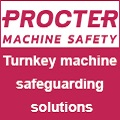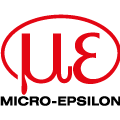
Posted to News on 12th Mar 2025, 09:30
Preventing mis-labelling in food tin production
Identify Direct, trading as Machine Vision Technology, has developed a label-checking system for a major food canning company, which operates 26 production lines over two sites, and used to be particularly susceptible to mis-labelling due the a very large range of products for several major supermarkets.

The most recent work was built on the success of an earlier system, which had proven itself extremely robust and reliable over the 20 years it had been in operation, remaining operational to the present day and preventing all mis-labelling and the corresponding fines.
The customer, though, recently returned for an upgrade to the system: products are increasingly displaying DataMatrix (2D barcodes) on their labels, requiring an imager-based reader rather than a traditional laser scanner. This poses a challenge to the system integrator of significant 'motion-blur' on fast-moving production lines.
An additional complication is a 2D barcode is now required in the overlap region of the label for use in 'multi-pack' cans, to prevent a pack of cans being split and sold separately. Therefore, the barcode cannot be visible on the finished product to prevent it being scanned at the checkout, but the barcode obviously still needs checking in production.
A number of key factors had to be considered in finding a solution. The 2D barcode had to be read after the leading edge of the label is glued and before the trailing edge is fully wrapped round (it then overlaps the leading edge and covers up the barcode). With can speeds up to 13 cans per second, there was blurring of the image due to motion. Very bright illumination was needed to cope with the very short shutter speed which is needed to counteract the motion blur, but the very bright direct illumination caused stray reflections from shiny labels.
Further, each time the glue gun fires it causes strands of glue which land on neighbouring equipment and would obscure a camera lens within minutes.
That wasn't the end of it. There was only a very narrow time window and a very narrow angle in which the barcode on the partially applied label is actually visible. And can spinning as the label is applied meant the systems needed extremely accurate triggering of the image capture.
Identify Direct developed a solution using a Keyence SR-X300 camera-based reader. A position was chosen in the rotation of the can being labelled where the barcode was square on to the reader and visible, and a very precise trigger sensor was chosen to reliably trigger the reader at this instant in time. A long standoff distance was chosen (a feature of the SR-X300) to enable the reader to be well clear of the glue.
The strobe type illumination was set to maximum to compensate for the very short exposure time and large standoff distance. The SR-X300 has a feature where it can use polarised light and 'cross polarisation on the lens' to virtually eliminate all specular reflections from the direct illumination. This was a key feature.
The AI feature, together with capturing three successive images, greatly increased the reliability of the reading; (if the first image could not be read then the second was tried and if necessary, the third).
A PC was used to display every image in real time for the sake of the operators. This enables them to very quickly work out what is needed to be done when the successful read rate decreases; for example clean the lens or re-align the camera after a product change.
The system is in production, three shifts per day and six days a week, and has outperformed expectations. It has not required any specialist intervention from Identify Direct or the system integrators after the initial setup and training of the customer.
Want the latest machine building news straight to your inbox? Become a MachineBuilding member for free today >>
Blackdown Mill
The Old Stable
Kenilworth Road
CV32 6QT
UNITED KINGDOM
01926 563000

















